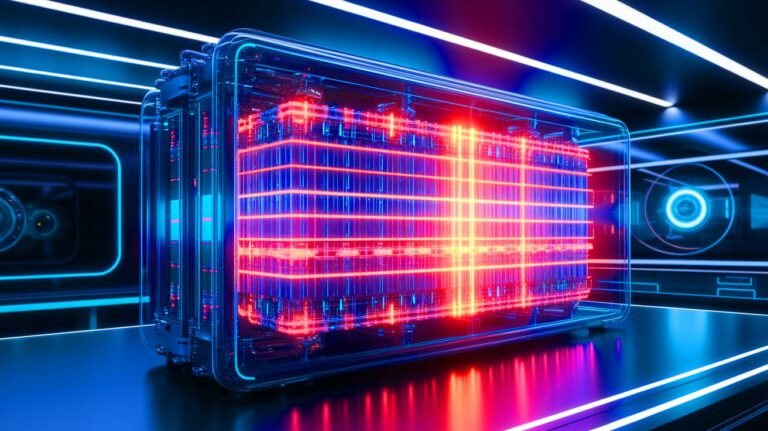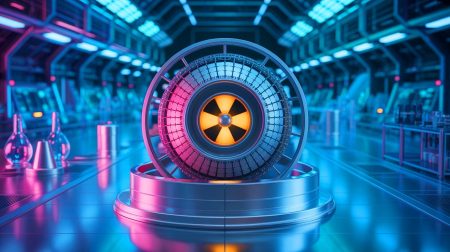| IN A NUTSHELL |
|
In the fast-evolving world of electric vehicles (EVs), battery technology is the heart of innovation. As US automakers grapple with the complexities of creating efficient and sustainable batteries, Chinese company Contemporary Amperex Technology Limited (CATL) is forging ahead with groundbreaking advancements. Among these is the sensational ‘battery within a battery’ concept, designed to meet the escalating demands of the EV market. This innovative approach is not a distant dream but a reality available today, showcasing CATL’s dominant position with a 38 percent market share. With the introduction of sodium-ion batteries and other technological marvels, CATL is defining the future of energy storage.
The Battery Within a Battery
The concept of a ‘battery within a battery’ is as revolutionary as it sounds, combining different battery chemistries to create a more adaptable and efficient power source for electric vehicles. CATL’s Freevoy Dual-Power Battery system integrates sodium-ion and lithium-ion batteries, leveraging the strengths of each to enhance performance. This dual approach allows vehicles to operate optimally in varied conditions, such as extremely cold climates, by using sodium batteries when temperatures drop and lithium batteries when conditions warm up.
The Freevoy system doesn’t stop at sodium and lithium combinations. It also includes Nickel Cobalt Manganese (NCM) batteries, capable of delivering an astonishing range of over 900 miles along with peak power exceeding one megawatt. Furthermore, the lithium-lithium Freevoy combo promises fast charging paired with low operational costs, redefining what’s possible in EV battery technology.
Another remarkable innovation within the Freevoy system is the self-forming anode. Unlike traditional batteries that require a pre-formed anode, the Freevoy battery constructs its anode during the initial charging cycles. This process results in a 60 percent volumetric energy boost, effectively packing more energy into a smaller space and enhancing the overall efficiency of the battery.
Batteries That Charge in 5 Minutes
CATL is not only innovating with new battery types but also pushing the boundaries of charging technology. The Shenxing Gen 2 ultra-fast-charging battery is a testament to this pursuit. While the first-generation Shenxing offered 4C charging rates, enabling a full charge in about 15 minutes, the Gen 2 batteries escalate this capability to a staggering 12C, promising a full charge in just five minutes. This advancement makes recharging an EV almost as quick as refueling a traditional gas-powered car.
However, the realization of this ultra-fast charging requires infrastructure that is not yet available, specifically a 1,300 kW charger. Despite this limitation, CATL’s ambitions suggest that development is already underway, potentially starting in China. As the global market watches, the question remains whether these innovations will cross the ocean to the United States, particularly given the current tariff challenges.
Nevertheless, CATL’s relentless pursuit of cutting-edge technology underscores its leadership in the EV battery sector. As the world stands on the brink of a battery revolution, the advancements being made today promise to transform how we perceive and use energy in vehicles.
The Impact of CATL’s Market Dominance
CATL’s commanding presence in the EV battery market is reshaping industry standards. With a market share of 38 percent, the company’s influence extends beyond just technological innovation; it sets the pace for global battery trends. One of the key factors in this dominance is CATL’s ability to rapidly bring new technologies to market, effectively outpacing competitors who are still in the planning stages of their next-generation batteries.
This strategic advantage is crucial as the EV market continues to expand. Batteries remain the most expensive and vital component of electric vehicles, determining everything from range and performance to longevity and cost-effectiveness. CATL’s advancements promise to enhance these aspects, making EVs more accessible and appealing to a broader audience.
Moreover, CATL’s innovations in battery technology are pivotal in the transition to more sustainable energy solutions. The shift from traditional lithium-ion to more robust options like sodium-ion and hybrid systems marks a significant step forward in reducing environmental impact and increasing battery lifespan. These developments not only benefit consumers but also contribute to global sustainability goals.
Future Prospects and Challenges
As CATL continues to drive innovation in the EV battery sector, it faces both opportunities and challenges. The company’s ability to consistently deliver cutting-edge technology places it at the forefront of the industry, but it must also navigate geopolitical tensions and trade barriers that could affect its expansion into Western markets.
The ongoing tariff war between the US and China presents a significant hurdle, potentially limiting CATL’s ability to introduce its latest technologies to American consumers. However, the demand for efficient, fast-charging, and long-lasting batteries is universal, and CATL’s breakthroughs could eventually lead to new partnerships and market openings.
Looking ahead, CATL’s strategic focus will likely involve expanding its production capabilities and continuing to refine its battery technologies to meet the diverse needs of the global market. As the world shifts towards electrification, CATL’s role will be crucial in shaping the future of transportation and energy storage.
As CATL’s innovations continue to reshape the landscape of electric vehicle technology, one must wonder: How will these advancements influence the future of transportation, and what new possibilities will they unlock in the quest for sustainable energy solutions?
Did you like it? 4.2/5 (22)











Wow, a battery inside a battery! Sounds like some sci-fi stuff! 🚀
Sounds like a waste of time and materials fuck you burn alive stupid fuckers
How reliable is this new technology? Will it last as long as traditional batteries?
This is just what the EV industry needs. Thank you, CATL, for pushing the boundaries! 👏
900 miles range? That’s insane! But how does it perform in real-world conditions?
Five-minute charging sounds too good to be true. Are we sure this isn’t a typo?
Fuck you and the ev bullshit hope all you stupid fuckers burn alive